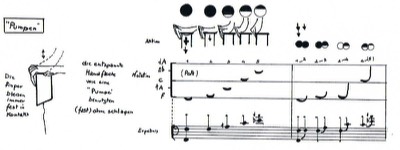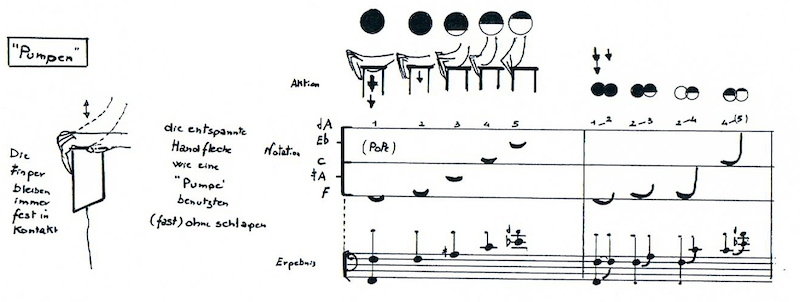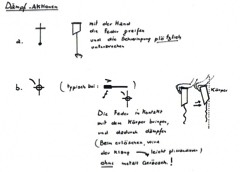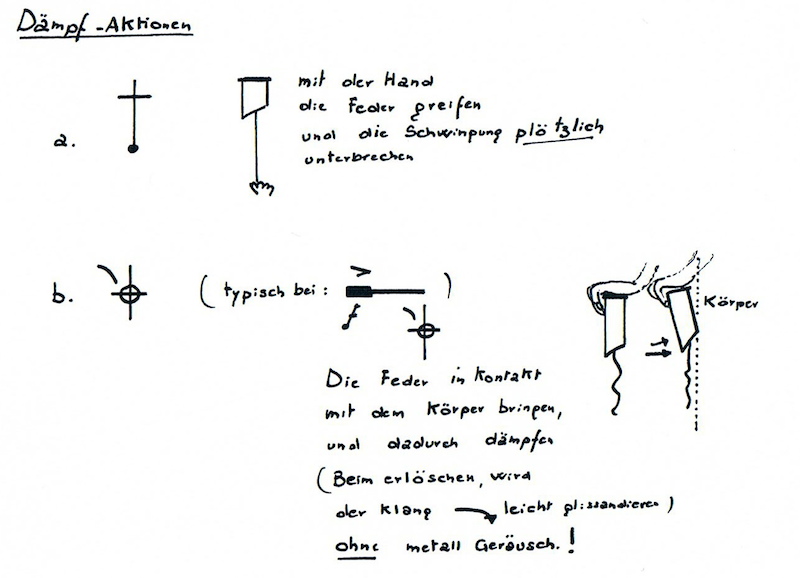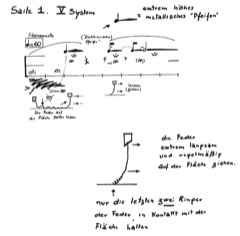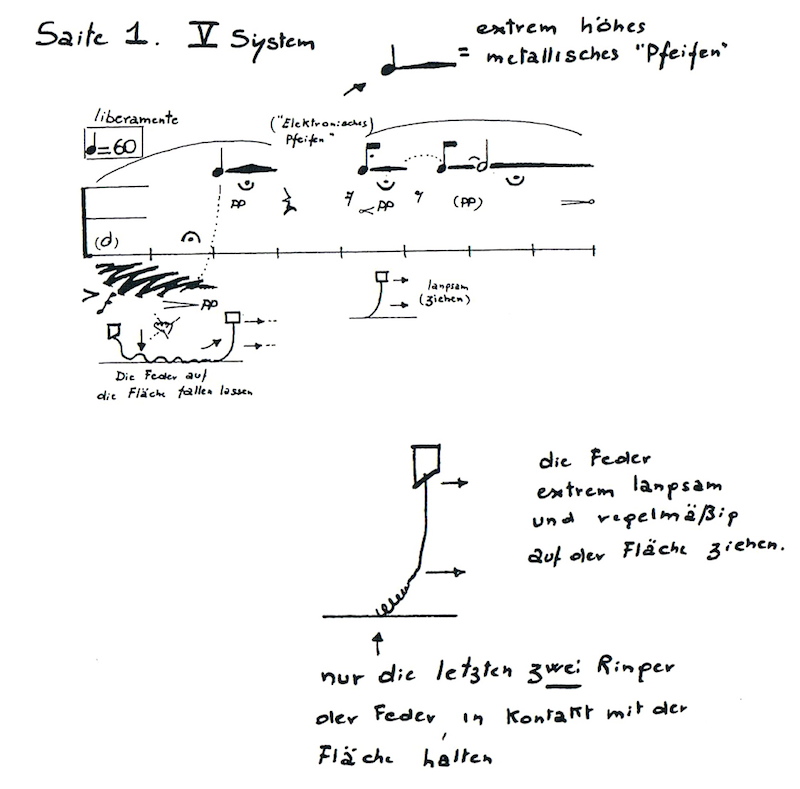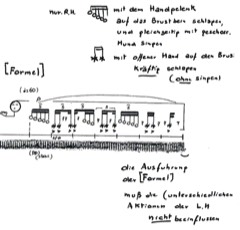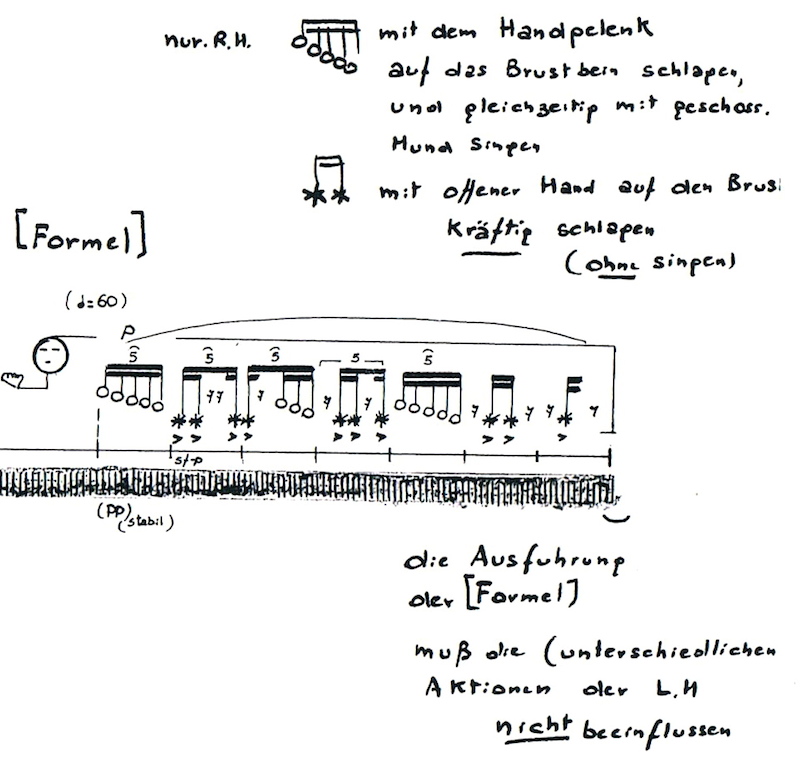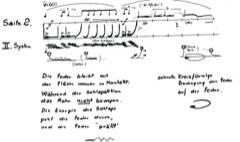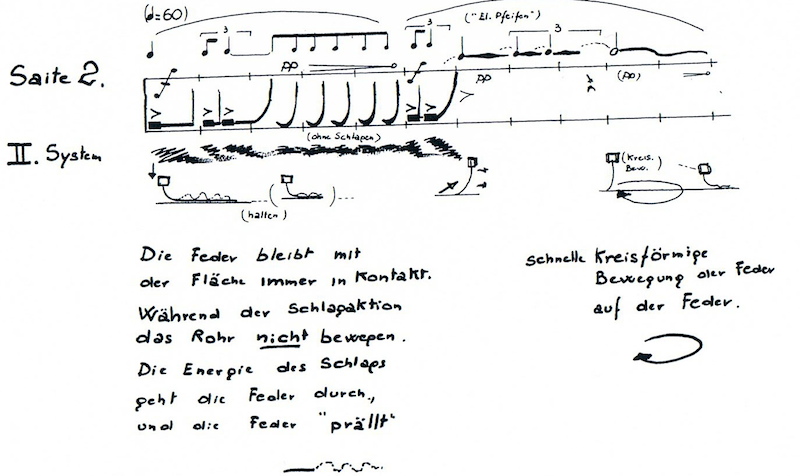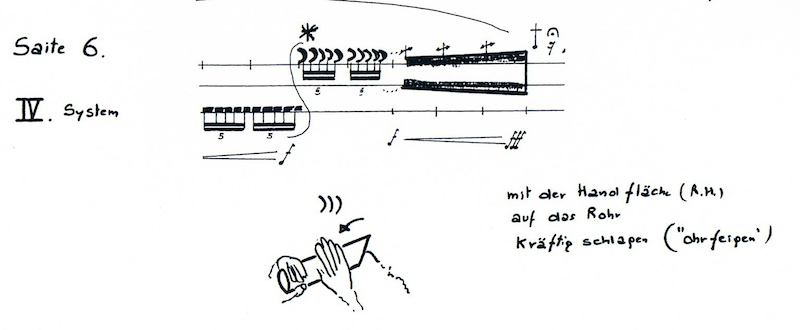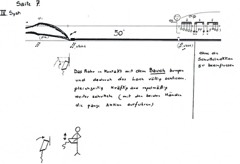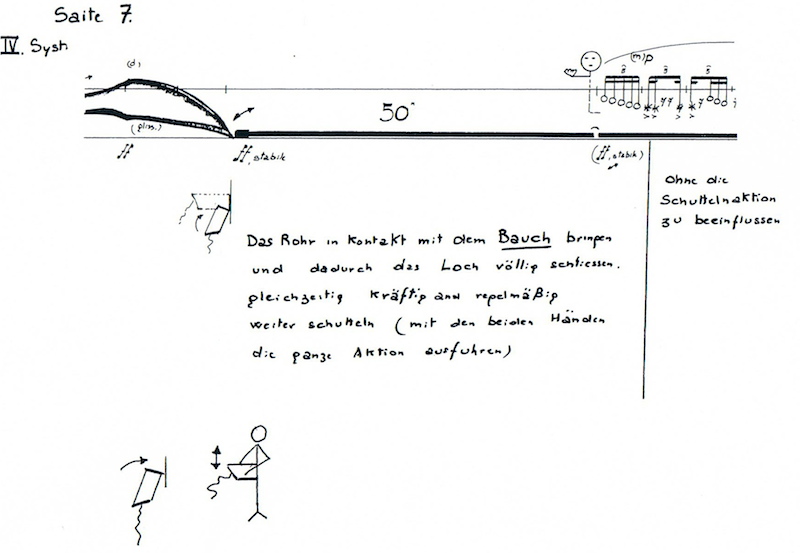Improving the practice and performance of contemporary music
Assimilation and adaptation of the different techniques and combinations
Hitting
The size of the spring drum chosen is very specific because it should be possible to close the entire hole with the palm of the hand. There is an entire series of natural harmonics that can be produced by controlling the size of the open hole, as displayed above. When the hole is totally closed, the fundamental is brought out; when it is hit on the extreme edge, we hear the highest possible harmonic.It is necessary to create a kind of memory in the hands to know exactly where to hit to produce the desired harmonic. This requires great attention and will take quite a while to perfect, but once you know it, you won't forget it. The “notes” are used in “melodies” and fast combinations and glissandi throughout the piece as displayed below.
Pumping
This is closely related to the hitting technique. You basically grab the front edge of the spring drum with the tops of your fingers and then “pump” your hand towards the fingertips over the hole. You could compare the movement with kneading dough. The bigger the opening you make while doing this gesture, the higher the harmonic that will come out. Glissando techniques are also obtained by moving from one harmonic position to another as displayed above.There is one extra note that is possible to bring out of the spring drum in this technique: by pumping the hole totally closed and creating a kind of overpressure by pushing the palm of the hand into the drum, a lower octave fundamental is obtained.
Shaking
These techniques are obtained by shaking the spring drum back and forth and by allowing the spring to resonate into the tube. The sonorous result is a kind of “cluster” of the harmonics that are brought out by the hitting and pumping technique and the sound is very saturated. This cluster can be modified in structure by the amplitude of the shaking, by closing the hole of the drum partly and so amplifying some of the harmonics (sounds as a glissando) and by closing the drum fully with the palm of the hand. The latter brings out a muted kind of cluster, as if the sound was veiled.
Hitting the drum
- When the hitting on the drums is notated as small dots and the dynamic is between pppp and mp, I use the fingertip of my index finger.
- When the hitting is notated as large dots with a dynamic range between mf and ff, I use a combination of knuckles or one knuckle at a time.
- For the upward triangle symbol, I hit the skin of the spring drums with the nail of my index or middle finger. This technique is obtained by “flinging” the finger against the skin; similar to the motion you would use to fling away something small out of your hand. (Press the index or middle finger against the thumb, build up pressure and then move forward the index or middle finger)
Spring action
- The first action is executed by pulling the spring with the fingers and then releasing. The best sound is obtained here if you use your the nails of your thumb and index finger; it adds extra punch to the sound.
- Second action is simple contact between the spring and the metal plate.
- Third action idem dito, but here the spring remains lying on the plate.
- Fourth action is making contact between the spring and the side of the plate.
- Fifth action idem dito combined with a regular up and down motion, which creates a constant cluster sound. The motion should be as regular as possible and the changes in direction as inaudible as possible.
Dampening
- The first is simply dampening the spring with the free hand. Important here is to be careful about contact noises when you dampen. The spring is very sensitive.
- The second technique is dampening the spring against the body. An upwards glissando will be heard while performing this technique. The most effective way is to push the skin of the drum together with the end of the spring against the body. Be careful about what you wear when performing this. Buttoned shirts can create unwanted noise while performing this technique.
Special techniques
Introduction
In the introduction passage the opening of the spring drum is held against the abdomen and the spring between index and thumb of the free hand. The articulation of rhythm is obtained by flicking the spring back and forth with the ring finger of the free hand while still holding the spring. Closing or opening the opening of the drum with the abdomen, as displayed above, provides the articulation of the three sound types.
Feedback
Feedback is why the choice of which metal plate is used is of great important. The contact between the end of the spring and the metal plate produces a sound similar to very high electronic feedback noise. Some practice is required to fully control the sound and its dynamic and length.
Voice and chest
- The first one is using the closed fist on the chest while singing softly a descending scale
- The second one is hitting the chest with an open palm.
Combination: hitting, pumping and contact with metal plate
This is a quite simple example of a combination of three techniques. The most important thing here is that you find a good positioning for the spring so it can move kind of freely on the metal plate, thus producing a “sizzle” sound. At the end of this phrase you encounter the turning event. This is similar to the feedback technique, with the only difference being that you move the spring quickly in a circle. This technique requires some practice to control it properly.
Full hand hitting
Abdomen shake
- The first option is to allow the spring to jump around freely, producing contact noise sometimes to the drum. In this option you can play more fierce and wild. Just hold the drum with one or two hands and shake wildly.
- The second option is without this contact noise. You can obtain this by holding the drum with the long end upwards and holding it at the top with one hand while shaking very fast. The dynamic is about the same as option one, only the sound is higher and denser, and the result is better controlled. I would suggest this option for recordings.


